In 2003, Dr. Michael Kaslow and his wife, Bobbi, moved to Tennessee from California bringing with them an extensive collection of mid-18th century furniture. They wanted a home where they could place the extensive collection and have an opportunity to preserve history. They found Rattle and Snap Plantation, which is listed on the National Register of Historic Places, not too long after it just missed going on the auction block. Then owner Amon Carter Evans defaulted on a loan and the home was but an hour away from going into foreclosure when Evans was able to make a deal with the bank.
Evans was a former owner and publisher of “The Tennessean”. He and his wife, Debbie, had bought the plantation home (built by George Polk between 1842 and 1844) in 1979 and spent years and millions of dollars to bring it back to its former glory. After the Kaslows purchased it, they spent another year redecorating the home in the style it would have had when owned by George Polk. They have been opening the home for tours ever since.
Rattle and Snap has been described as “one of the best examples of Greek Revival architecture in the country.” The 10 twenty-six-foot Corinthian columns that make up the entry portico are the very definition of opulence. They were shipped by river to Nashville from Cincinnati in 1843 and then pulled by ox cart to the hilltop near Mount Pleasant, Tennessee where the home currently stands. One of George Polk’s daughters once said that the cost of the portico alone was $40,000, which is equivalent to $1,559,531.58 today.
History of Rattle and Snap
The history of Rattle and Snap began in the late 1700s when Colonel William Polk played a game of chance with North Carolina’s governor, who was also his brother–in-law. Losing greatly, the governor placed the certificate for a land grant he owned in Tennessee onto the pile of his bet hoping to regain his losses. Instead, Polk walked away with 5,648 acres of land west of what is now Columbia, Tennessee. The game, played with beans and a finger snap, was called Rattle and Snap.
Colonel Polk, who had been appointed surveyor-general of the Middle District of Tennessee in 1784, was a land speculator and was already one of the largest land holders in Tennessee, so he passed the Rattle and Snap land to his sons. Son Lucius built Hamilton Place on one parcel of the land. Ashwood Hall, built by his second son Bishop Leonidas Polk, was eventually sold to his fourth son Andrew. The third home was built by Rufus and called Westbrook. George Washington Polk, William’s youngest son, married Sallie Hilliard of Nashville and together they built the grand home they dubbed Rattle and Snap after the game that won his father the land. Where the four pieces of property met, the brothers built St. John’s Episcopal Church. Today, only Rattle and Snap and Hamilton Place still exist.
Many plantation homes were destroyed during the Civil War, but Rattle and Snap survived, so legend tells, because a Union Army officer, who was a Freemason, saw George Polk’s masonic ring in a portrait and refused to loot or burn a fellow Freemason’s home. Although the Polks had a home to come back to after the war, the family went bankrupt with the loss of their slaves and were forced to sell it to Joseph John Granbery in 1867. The Granbery family lived in the mansion for more than fifty years. In 1919, they sold to W.P. Ridley and W.A. Dale, who was more interested in the farmland. The house was vacant, except for a caretaker, until Mr. and Mrs. Oliver M. Babcock bought it and began the process of restoring it. They sold to William B. Allen and his wife in 1973, and then it was sold to Evans in 1979.
Design of the Plantation
The two-and-a-half story mansion offers 12,000 square feet of living space under a shallow hip roof. L-shaped, besides the grand façade, there are two more grand entries. One of the side porticos has four “Temple of the Winds” columns and on the other side there is a balcony reminiscent of New Orleans made of delicately wrought iron.
The interior of the home is equally elegant with high ceilings, rich wood work, fine plaster ceiling medallions, coffered ceilings and sumptuous fabrics, like Salamandre silk. Original finishing materials were imported from Ohio and New Orleans. The current owners have set the scene with opulent décor and accessories to allow visitors to see what life would have been like pre-Civil War.
In the home, the Kaslows have placed a blend of pieces they had acquired previous to the move, like a John Henry Belcher settee hand-carved by the designer himself and added pieces that originally belonged to the Polk family. Many of the Polk family possessions had to be sold when they lost everything after the Civil War, but some were passed down to family members and eventually found their way back into Rattle and Snap.
The main floor has double parlors, which may be open into each other to form one large entertainment space, and a duplicate double set of dining rooms on the other side of the home. Also doubled are the curved staircases.
Built of thousands of bricks, made onsite by the family’s slaves, plus local natural limestone and timber, the exterior was finished off with stucco. The back of the home opened once upon a time to lush gardens that were designed by Sallie Polk, but planted and maintained by slaves. Now, the backyard offers a large pool encased in a brick patio.
While George Polk served as his own contractor, it is thought that the home may have been designed by a noted German-American architect of the time named Adolphus Heiman.
Plantation is Open to Visitors by Appointment
When the Kaslows moved into the back part of the home and began their remodel of the public spaces, it was with the idea of sharing the home’s beauty with the public. They have long opened the home by appointment to groups of four or more. Special packaged tours are available for those who want a more personal “boutique” tour with flourishes as elegant as the stately home.
Boutique Tour Guests will spend more than two hours exploring not only the main floor and gardens available to those on their basic tour, but the homeowner will also take these special visitors up to the second floor to see the newly restored bedrooms and ballroom. The tour ends with refreshments on the veranda served with real Southern-style hospitality.
Rattle and Snap is located at 1522 N. Main St., Mt. Pleasant, TN 38474. More information about Rattle and Snap can be found on their website. Reservations can be made by calling 931-379-1700 or Contact E-Mail For Tour Reservations or Questions.
Subscribe to our FREE Newsletter!





















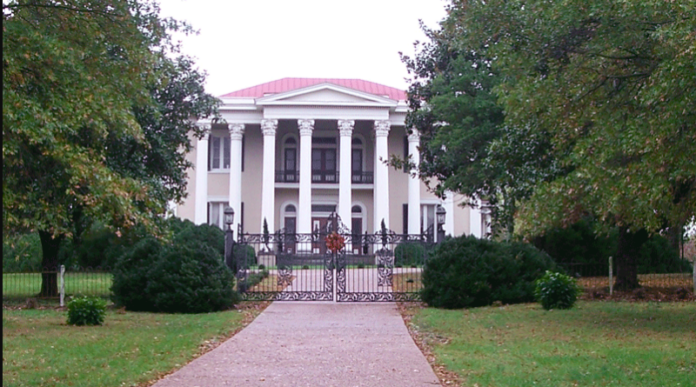
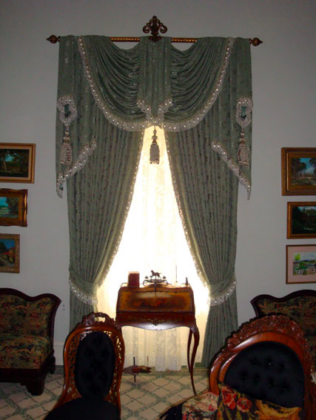
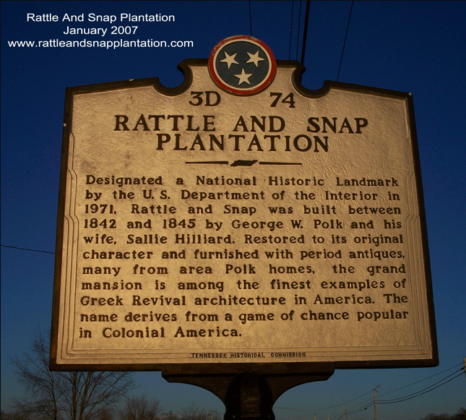
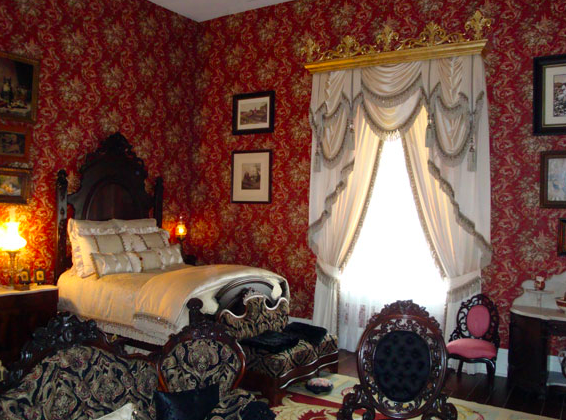
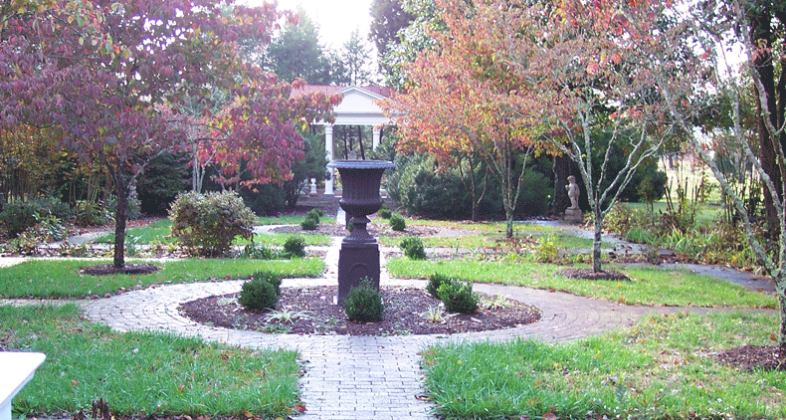

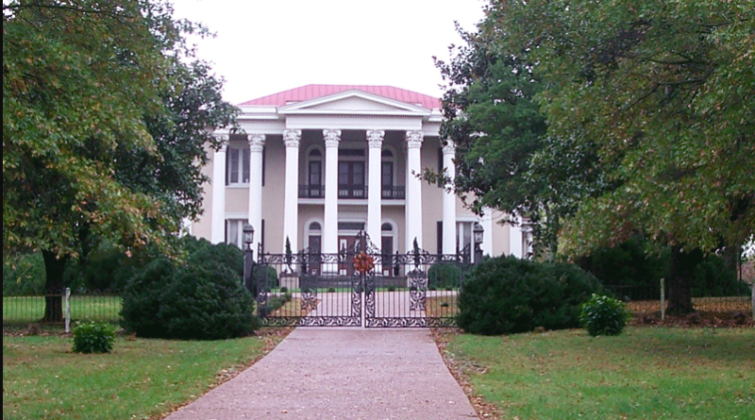






We really appreciate your lovely article about Rattle and Snap.
Thank you,
Bobbi and Michael Kaslow